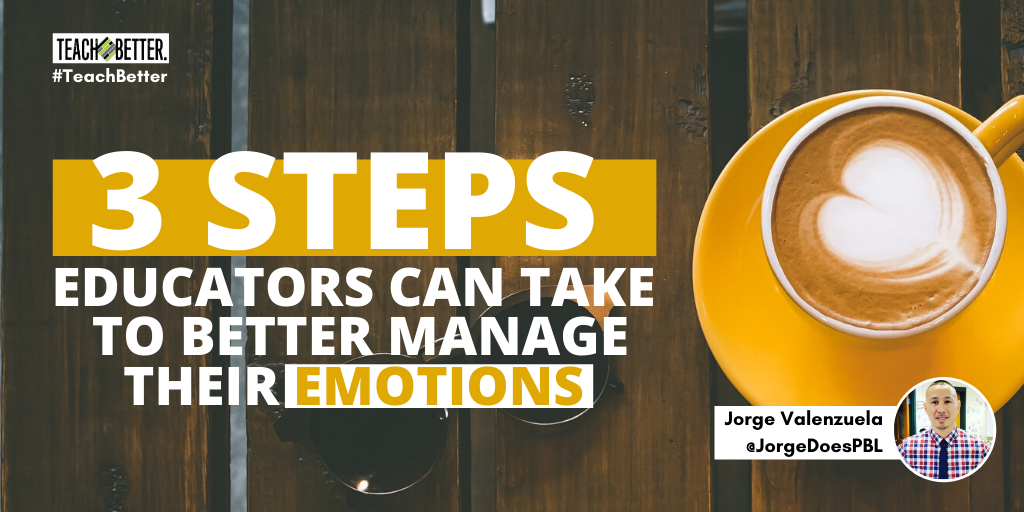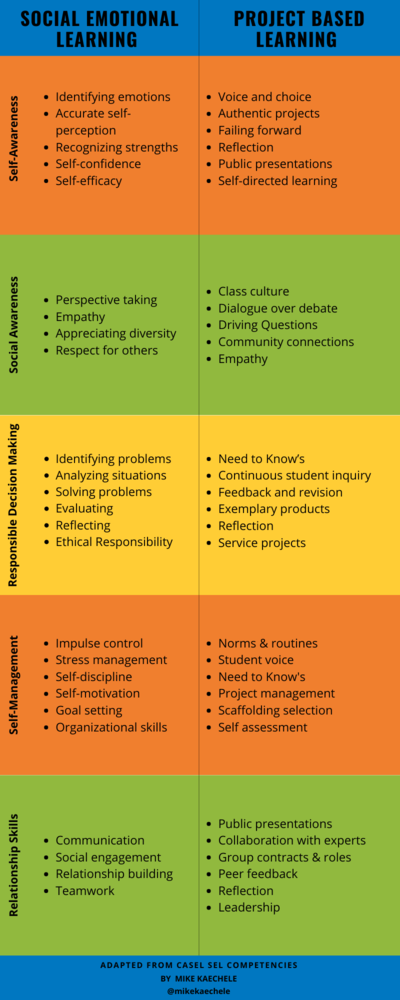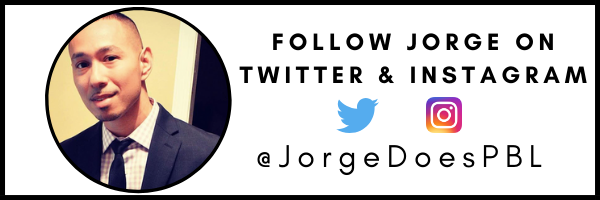In This Post:
- A background on emotional intelligence, EQ.
- Research on emotional regulation.
- Suggestions to improve social emotional learning, both of yourself and students.
Being an ever-evolving educator, I am continually looking for ways to improve my practice. Both for helping students and also those closest to me. Almost a year ago (March 2019), I read an article by Travis Bradberry on mastering first impressions. I was impressed with his insight and understanding of human psychology.
The article provided quick tips for showing up better in my interactions with others. It also pointed me to the book Emotional Intelligence 2.0, which Travis co-authored with Jean Greaves.
Before that moment, I hadn’t heard of emotional intelligence (EQ) or even knew that it existed (although it was introduced to the masses in 1995 by Daniel Goleman).
Let’s just say that this knowledge gap stalled progress in some of my interpersonal relationships, namely with my two children and some colleagues.
Unfortunately, I didn’t know that until I read the book and took the emotional intelligence test — the Emotional Intelligence Appraisal.
The EQ Test
The test has parts, and scores are based on a comparison to the general population. It focuses on the four parts of the EQ model dealing with personal competence and social competence.
These four parts are self-awareness, self-management, social awareness, and relationship management.
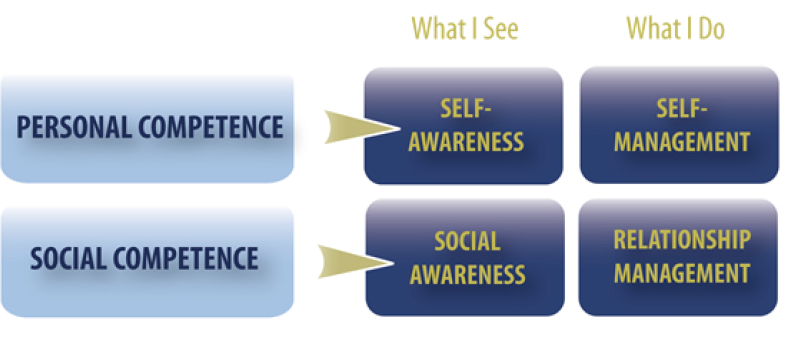
(This graphic is from the Emotional Intelligence Appraisal by Talent Smart)
I found my EQ test results extremely helpful. My scores were automatically tallied for me and were accompanied by actionable recommendations customized to fit my unique profile.
Furthermore, I love that the authors conducted research involving more than 500,000 participants to discover how they use and manage EQ, as well as its impact on their lives.
This decade of research showed many interesting and relevant findings. There were a few points that stood out most to me in the EQ 2.0 Fact Sheet.
The first was that 70% of people do not handle conflict or stress effectively. The second was that only 36% of us understand emotions as they happen. This is amplified in the workplace, where a mere 15% of people feel respected and valued by their employers.
The results from the study and my own EQ scores helped me understand that there was work I needed to do to keep my emotions in check, while also helping my students to do the same.
Luckily, a current trend in education is for teachers to be more intentional about the social and emotional learning (SEL) of students. So this type of conversation and associated practices are becoming easier to implement. And although it’s not always easy to learn new tricks (especially when we’ve had a lifetime of practice doing things in a certain manner), here’s how to start in three steps.
[scroll down to keep reading] Step 1: Understand Emotions
Step 1: Understand Emotions
Psychology tells us that emotion is a complex state of feeling that impacts both physical and psychological changes in people. This, in turn, influences their thoughts and behavior.
I previously did not understand the power of my own emotions, their impact on my overall well-being, or how they impacted my social interactions with others.
This knowledge gap caused me to avoid ownership with some of my previous behavior. I also did not acknowledge how I was showing up emotionally, for both myself and others.
If this sounds familiar, don’t beat yourself up. Emotions are not always easy to comprehend or catch in real-time. And luckily, we have experts (psychologists) to help us begin to make better sense of it all.
In psychology, there are several theories of emotion which are often categorized as physiological, neurological, and cognitive.
They include the following:
- Cognitive Appraisal Theory
- Evolutionary Theory of Emotion
- Facial-Feedback Theory of Emotion
- Schachter-Singer Theory
- The Cannon-Bard Theory of Emotion
- The James-Lange Theory of Emotion
There is a lot to dive into here. But research in the field of SEL and readily available educational materials can help make a lot of this actionable in today’s schools.
Here are some excellent resources for educators to consider:
- Merrell’s Strong Kids: SEL Curriculum for the various grade levels (K-12)
- The Collaborative for Academic, Social, and Emotional Learning (CASEL): Teacher SEL classroom resources and support for educators and policy leaders in enhancing the academic and personal experiences for PK-12 students
- Edutopia: 13 Powerful SEL Activities
- Greater Good Magazine: Three Keys to Infusing SEL Into What You Already Teach
Step 2: Recognize Your Emotions
Naming our emotions is a critical first step needed for us to effectively begin to manage our own emotional state. Psychologists call this labeling.
Emotions influence all of the decisions we make and our views of the world and situations we encounter. Therefore, I believe it is advantageous for educators to skillfully recognize what triggers certain emotions and the associated feelings that occur within us as a result.
This is especially true of the negative ones, as they tend to be problematic.
Emotions influence all of the decisions we make and our views of the world and situations we encounter. Click To TweetAccording to neuroscience research, emotions are created by our brain. Although they are highly related, emotions proceed feelings.
Filling this knowledge gap and making the necessary strides to recognize the wide range of emotions that cause me to feel fear, anxiety, anger, sadness, joy, and love was incredibly empowering both in and out of my classroom(s).
This new awareness caused me to respond more and react less to my emotions, while helping my students and immediate family to try to do the same.
Here are some excellent resources for educators to consider using for helping learners with labeling emotions, monitoring daily mood, and much more:
- Therapist Aid: Emotions Worksheets for Adults
- Apperson: 10 Activities to Help Students Explore Emotions
- Pinterest: Feelings & Emotions Group Activities
Step 3: Regulate Your Emotions
Lao Tzu once said, “Mastering others is strength. Mastering yourself is true power.”
I’m not sure if he was referring to mastering emotions, but the older I get, the more I realize that learning to regulate oneself is no easy task. It requires a lifetime of consistent practice, patience, and sincere honesty, at least with oneself.
Learning to regulate emotions would be the essential first step to improving our internal (and at times external) realities. And for that, it is necessary to examine the research.
The wealth of psychological research exploring emotional regulation is rich. It tells us that there are processes that we can use to influence our emotions — whether automatic or conscious.
My EQ scores informed me that I need to make more deliberate efforts to regulate my emotions, especially socially. I now know I can apply EQ to employ specific strategies for keeping them in check. And so can you.
We just need a great reason to start doing so. What better reason than ourselves, family, and students?
Just like the instructional strategies and protocols we use in the classroom, employing reliable, actionable steps is also helpful for regulating our emotions.
I found many benefits in work by Dr. James Gross, professor and emotions researcher at Stanford University and director of the Stanford Psychophysiology Laboratory. He concludes that we can learn to modulate and alter our emotions. His research shows that the result of modulation determines the last emotional response.
Due to wide acceptance that emotional regulation is closely associated with psychological and physical health, Gross even extended the process model of emotion regulation (PMER). It was first introduced in 1998, detailing five major points of focus during emotion regulation:
- Situation selection
- Situation modification
- Attention deployment
- Cognitive change
- Response modification
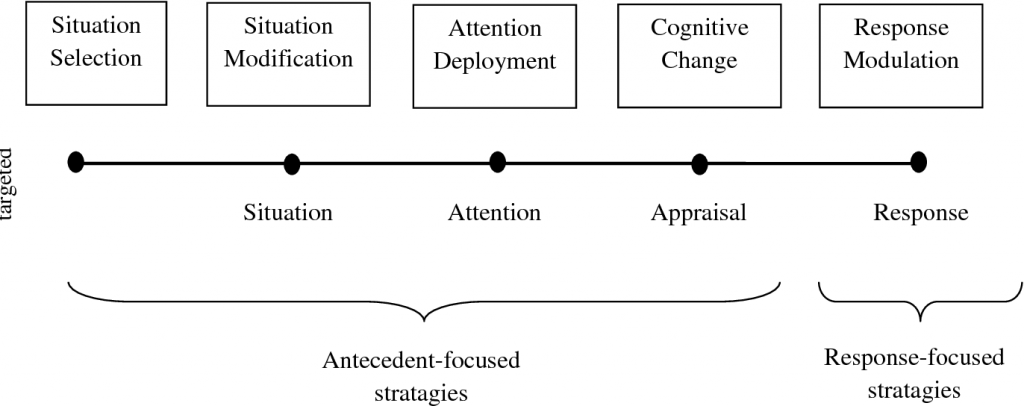
(Process Model of Emotion Regulation Illustration (Gross, 2002)
Focusing on the points of the PMER model and following recommendations from the Emotional Intelligence Appraisal provided me with actionable steps and much-needed insights.
I experienced small successes in how I began to show up emotionally and respond better to situations. This helped me understand that I do not have to remain a victim to my past circumstances or the conditioning that resulted in the way I experienced negative emotions throughout most of my life.
This realization proved to be very powerful for me — AND a complete game changer! Here are some excellent resources for educators to consider that can help learners to regulate emotions:
- We Are Teachers: 10 Tips for Teaching Emotional Regulation (& Improving Classroom Behavior at the Same Time)
- Lori Jackson and Steve Peck via ASCD: Managing the Classroom by Teaching Emotional Regulation
- Edutopia: How to Teach Self-Regulation
- Bounceback Parenting: Two Activities to Teach Basics of Emotional Regulation to Kids
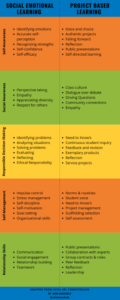
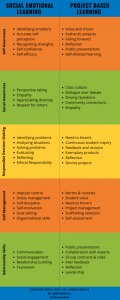 Bonus Step — for PBL Teachers
Bonus Step — for PBL Teachers
Recently I listened to an episode of the Project Based Learning In Practice podcast discussing how to combine SEL and PBL in your classroom with highly acclaimed PBL coach and writer Mike Kaechele.
In his interview with host Shayla Adams-Stafford, Mike provided great tips and insights from his blog ‘The marriage of SEL and PBL’. His nifty NEW chart that shows how CASEL’s SEL Competencies can be logically embedded into the HQPBL framework.
I was delighted that Mike sent it to me for its inclusion in this post (see table and download here).
(Alignment between SEL and HQPBL by Mike Kaechele)
Last Word
Although learning EQ is new to me, it’s been around for quite some time. Through SEL, more schools in the United States are helping kids build their EQ skills.
Like anything else we learn to implement in our classrooms, I believe improving our EQ and the stories we share should be primarily for helping our students become better versions of themselves.
And it needs to begin with us developing and becoming the model they need.
Like Ayesha Siddiqi said — “Be the person you needed when you were younger.”
ABOUT JORGE VALENZUELA
Educational coach Jorge Valenzuela is new to the Teach Better Team, a teacher at Old Dominion University and the lead coach for Life Long Learning Defined. His work is aimed at helping schools understand and implement computational thinking, computer science, STEM, and project-based learning. Currently, Jorge presents nationally on these topics; is an award winner, the author of Rev Up Robotics, an education advocate, and frequent contributor to books, academic journals, how-to blogs, podcasts, and webinars. Jorge is also a member of the Teach Better Speakers Network.

